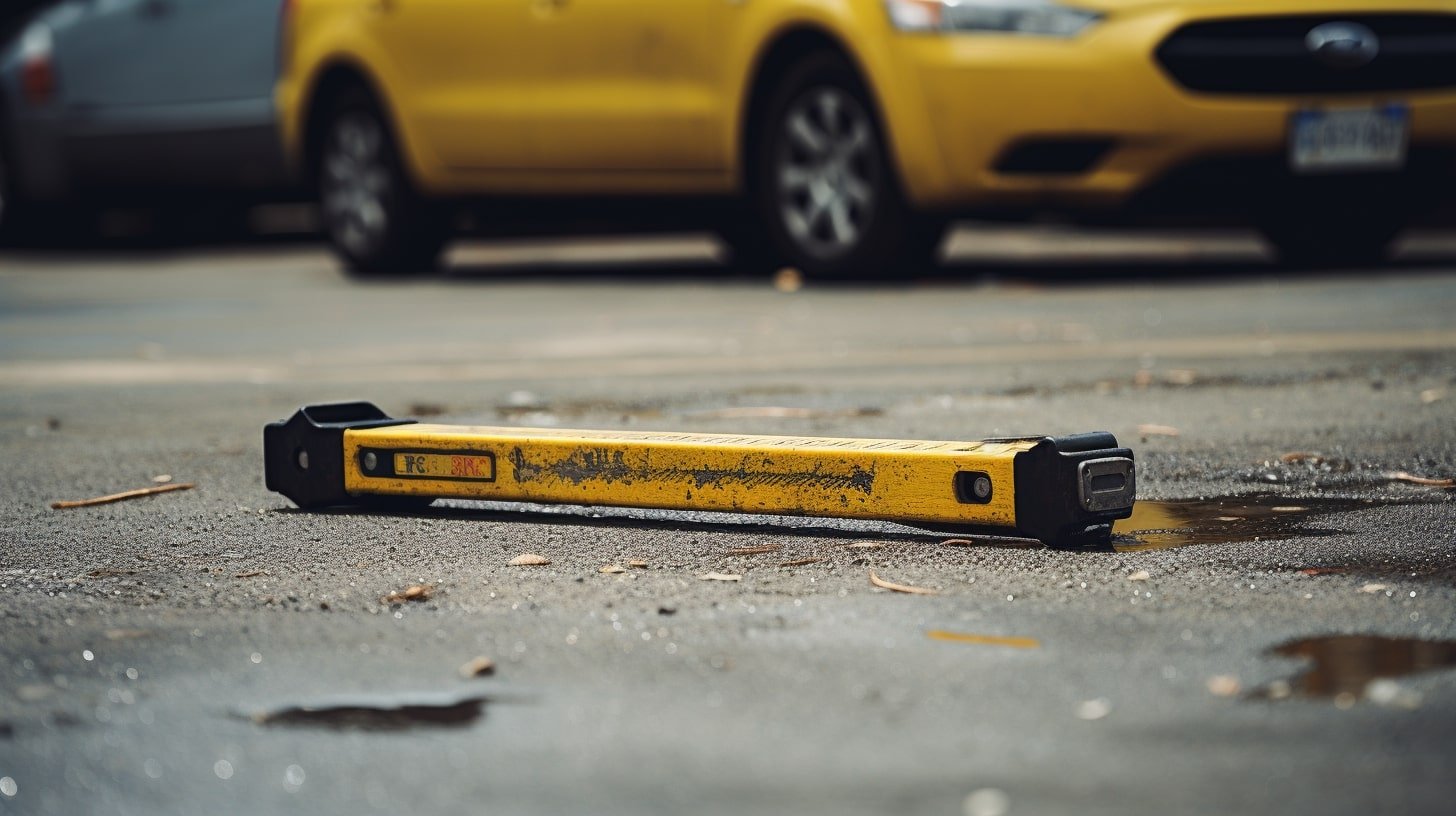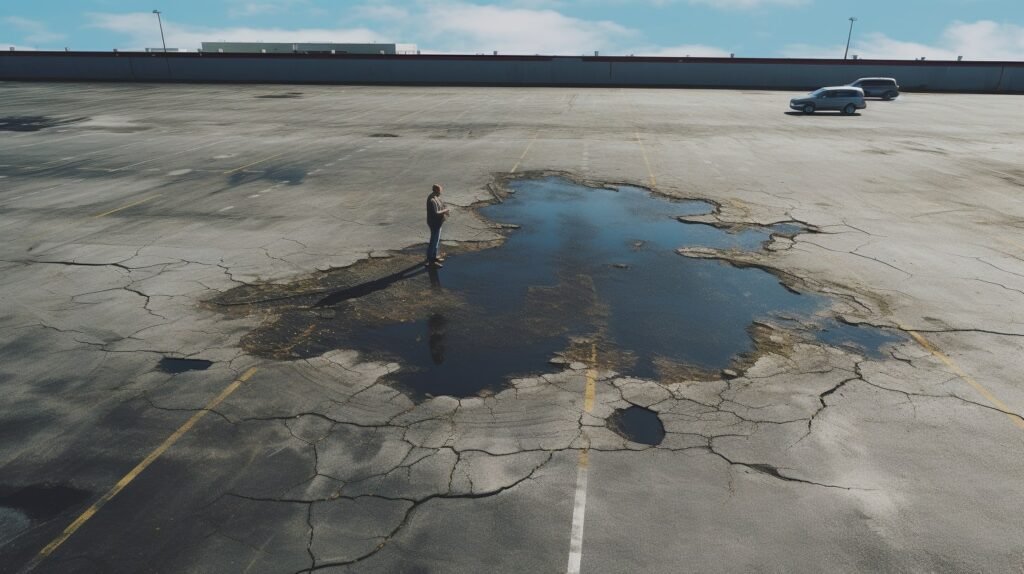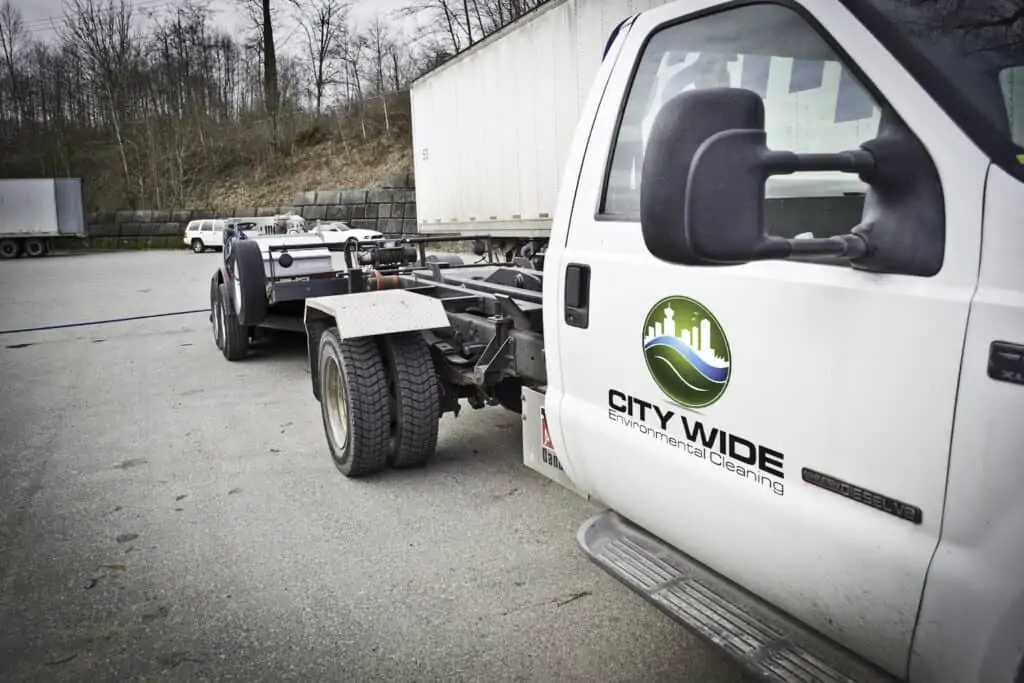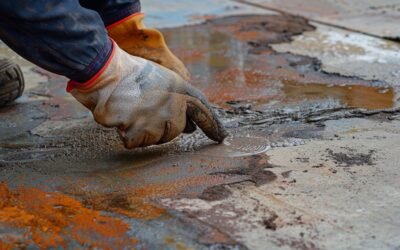Ensuring a flat and functional surface, parking lot levelling is not just about aesthetics; it’s an essential aspect of property maintenance that affects safety and value. An uneven parking surface is a precursor to accidents, vehicle damage, and a litany of additional issues that can be as severe as legal liabilities. Recognizing the signs of unevenness, understanding the underlying causes, and knowing how to address them are the first steps towards a reliable parking lot surface that stands the test of time.
Table of Contents
Introduction to Parking Lot Levelling
Parking lot levelling may seem straightforward, but it requires a careful blend of science, engineering, and practical know-how. The process begins long before any concrete is poured or asphalt is laid. A thorough understanding of the subsurface conditions, combined with meticulous planning and preparation, sets the stage for a smooth, durable parking lot that reflects well on your property.
Poorly levelled parking lots are more than just an unsightly annoyance; they can lead to water pooling, which causes damage over time, and create hazardous conditions for pedestrians and vehicles alike. In a climate as varied as Canada’s, with its freeze-thaw cycles and heavy snowfall, maintaining a properly levelled parking lot is both a safety issue and a financial one.
Whether you’re a property manager dealing with a neglected parking space, a contractor looking for the latest in levelling technology, or a DIY enthusiast ready to tackle your business parking lot, this guide will walk you through the complexities of achieving and maintaining a perfectly level parking lot.
Understanding Your Parking Lot’s Foundation
Assessing the Existing Conditions
Before any levelling work begins, a comprehensive evaluation of the current surface and subsurface conditions is essential. This assessment involves the identification of undulations, cracks, and wear-and-tear that may impact the levelling process. Professionals use a range of tools, from the basic visual inspection to more sophisticated methods like laser-guided transit levels, to determine the lot’s current state and plan accordingly.
The Role of Subgrade in Parking Lot Longevity
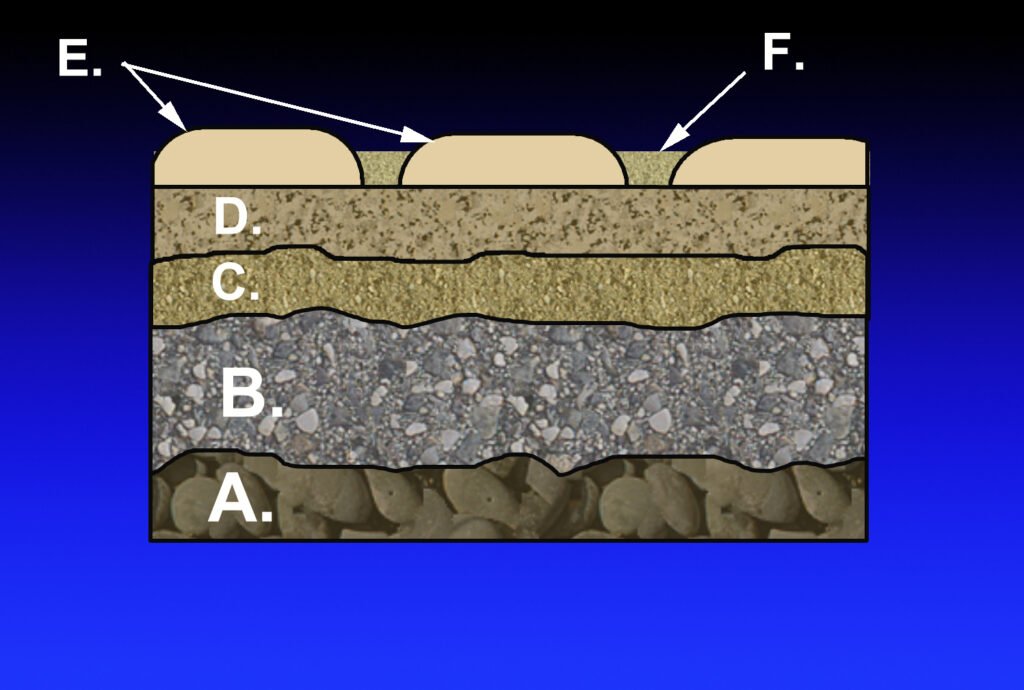
Layers in the construction of a mortarless pavement: A.) Subgrade B.) Subbase C.) Base course D.) Paver base E.) Pavers F.) Fine-grained sand. Image Source: Wikipedia.
The subgrade — the soil beneath your parking lot — plays a pivotal role in the longevity and performance of the paved surface. Depending on the composition of the soil, adjustments may be necessary to ensure it can adequately support the weight of parked vehicles and resist the forces of weather.
Fun Fact: Did you know that the type of soil in your subgrade can significantly affect your parking lot’s health? Clay soils, for instance, are particularly prone to expansion and contraction with moisture changes, leading to more frequent maintenance needs.
An understanding of the subgrade informs decisions on the appropriate levelling approach, whether it’s simply fixing up a few problem areas or a complete overhaul of your parking infrastructure. Adjustments to the subgrade may include compaction, addition of aggregate materials, or even drainage modifications to protect the integrity of the parking lot.
Subgrade Materials and Their Properties
| Subgrade Material | Description | Properties | Considerations |
|---|---|---|---|
| Clay | Fine-grained natural soil that holds moisture. | – High plasticity and expansiveness – Low strength when wet – Susceptible to shrinkage and swelling |
– Requires stabilization or replacement in subgrade. |
| Silt | Fine particles between the size of sand and clay. | – Moderate plasticity – Holds moisture – Prone to frost heaves |
– Might need mixing with other materials. |
| Sand | Coarse-grained particles ranging 0.075 to 4.75 mm. | – Good drainage capabilities – Non-plastic – Stable under load |
– Well-graded sand is preferred for stability. |
| Gravel | Granular material larger than sand particles. | – High strength and stability – Good drainage – Non-plastic |
– Compaction is crucial for proper performance. |
| Crushed Stone | Manufactured angular particles from rock crushing. | – Excellent strength and stability – Good drainage capability – Low deformability |
– Requires proper layering and gradation. |
| Recycled Concrete | Repurposed concrete material crushed to size. | – Varies by source material – Good drainage and stability – Eco-friendly option |
– Quality control is important for consistency. |
| Lime/Stabilized | Soil stabilized with lime or other additives. | – Improved strength and load capacity – Reduced plasticity and moisture susceptibility |
– Chemical stabilization can be a costlier option. |
Why Level Your Parking Lot?
A well-levelled parking lot is not just a matter of pride for property owners—it’s a critical component of a safe and welcoming environment for drivers and pedestrians. Uneven surfaces can lead to accidents, and standing water from poor levelling contributes to the degradation of the lot’s material, demanding constant and costly repairs.
Safety Concerns and Liability
Uneven parking areas pose a tripping hazard, increasing the risk of falls and injuries. Wheel stops or potholes on an improperly levelled surface can catch vehicle wheels, causing damage to cars and possibly leading to accidents. Owners of improperly levelled parking lots potentially face legal action if people get hurt due to negligence in maintenance.
Aesthetic Improvement and Property Value
A parking lot is often the first impression customers have of a business. A smooth, levelled lot speaks to the meticulousness of the business owner, suggesting a commitment to quality and attention to detail. Real estate professionals concur that a well-maintained parking lot can substantially enhance the curb appeal and, therefore, the value of the property.
Enhanced Lifespan of Pavement
Water pooling and improper drainage significantly shorten the lifespan of parking lot pavement by causing the material to break down faster. When the lot is properly levelled, it allows for better water runoff, reducing wear and protecting your investment over the longer term.
Key Takeaway: Parking lot levelling is about more than just fixing an uneven surface; it’s an investment in the safety, aesthetic appeal, and longevity of your property.
Identifying Uneven Parking Lot Issues
Common Signs of Unevenness
Several indicators can point to an uneven parking lot. Look for standing water after it rains or melting snow, deep cracks or fissures in the pavement, and areas where the asphalt or concrete has buckled. All are signs that the parking lot needs attention.
Users are often the first to bring attention to these issues, reporting puddles that cause splashing or falls, or rough rides over uneven surfaces. Taking prompt action upon noticing these signs is crucial in preventing further damage and potential accidents.
What Causes Parking Lot Deterioration?
Parking lot surfaces deteriorate due to several factors, including weather conditions, natural settling of the ground, insufficient base thickness, and poor construction materials or methods. In regions like Canada, freeze-thaw cycles put additional stress on parking lot materials, exacerbating cracks and leading to upheavals in the pavement.
Moreover, the weight of traffic—especially if the parking lot sees a significant number of heavy vehicles—can speed up the degradation of the surface. Understanding these factors is essential when deciding on the best levelling techniques for any given lot.
Now that we’ve explored the fundamental reasons for levelling your parking lot, let’s stop here and await further instructions before delving into the intricacies of choosing the right levelling method for your needs.
Choosing the Right Levelling Method for Your Parking Lot
Selecting a suitable method for levelling your parking lot is pivotal to the project’s success. From minor repairs to major resurfacing, the chosen method must align with the extent of damage, budgetary constraints, and desired longevity of the repair. Let’s explore the most effective levelling methods and the scenarios in which they are best applied.
Asphalt Resurfacing
Asphalt resurfacing is a popular method for dealing with extensive surface damage that doesn’t require complete replacement. This process involves applying a new asphalt layer over the existing one. It provides a fresh-looking, smooth surface and extends the life of your parking area at a fraction of the cost of a full replacement.
Popular Quote: “An ounce of prevention is worth a pound of cure.” Regular resurfacing can prevent the need for more extensive and expensive parking lot repairs in the future.
Concrete Grinding
Concrete grinding is a precise levelling method that trims down raised areas of concrete, resulting in a uniform surface. It’s cost-effective and environmentally friendly as it recycles existing materials. This technique is particularly suitable for remedying smaller problem areas or reducing trip hazards.
Slab Jacking and Foam Levelling
Slab jacking, also known as mudjacking, is a repair process that raises sunken concrete slabs by pumping a slurry mixture beneath them. Foam levelling, a more modern alternative, uses a polyurethane foam injected under the slab. Both methods are minimally invasive and fast-acting, making them ideal for correcting uneven slabs without removing them.
Regardless of the levelling technique selected, it’s crucial to choose based on the specific conditions and needs of your parking lot. Remember, a well-levelled parking lot is a safe and welcoming feature of any property.
The Step-by-Step Levelling Process
Initial Assessment and Planning
Every successful parking lot levelling project starts with an in-depth initial assessment. This phase includes surveying the extent of the damage, understanding the underlying causes, and determining the best course of action for repair. Essential planning also incorporates evaluating traffic patterns, drainage requirements, and the choice of materials, ensuring the levelling project aligns with the property’s needs and budget constraints.
Preparing the Area for Levelling
Preparation is key to a smooth levelling procedure. It involves clearing the parking lot of vehicles, debris, and any obstacles that might impede the process. Depending on the extent of the project, it can also include removing the top layer of the existing surface, addressing any subgrade issues, and ensuring proper drainage is in place. This stage sets the groundwork for a seamless levelling job.
Actual Levelling Techniques
Once the site is prepared, the actual levelling can begin. Methods such as asphalt overlay, grinding, slab jacking, or foam levelling are employed based on the specific requirements of the project. Each technique has its particular application process, but all share a common goal: to create a smooth, durable, and level parking surface that will endure the test of time.
Estimating the Costs of Parking Lot Levelling
Understanding the costs involved in levelling your parking lot enables careful planning and budget allocation. The expense of levelling can vary considerably depending on the size of the lot, the severity of the damage, the method chosen, and regional pricing variations.
Factors that Influence Levelling Costs
- Size of the parking lot: Larger lots require more materials and labour, increasing costs.
- Extent of damage: More extensive damage leads to higher costs for repairs and materials.
- Method of levelling: Different techniques come with varying price points.
- Material costs: Fluctuating costs of asphalt, concrete, and other materials can impact the overall budget.
- Geographical location: Labor and material costs can differ by region.
While cost is a significant concern, prioritizing quality and sustainability can lead to decreased expenses over the long term as the need for future repairs is minimized.
Potential Cost-Saving Tips
Looking for ways to save on parking lot levelling? Consider these tips:
- Schedule repairs during off-peak seasons when contractors might offer better rates.
- Stay on top of maintenance to prevent small issues from becoming major—and more costly—problems.
- Explore various quotes and seek references to ensure you’re getting the best value for your investment.
Good levelling is an investment that pays dividends in reduced repair costs and vehicle damage claims. Smart budgeting and choosing the right method are keys to cost-effective parking lot maintenance.
To get an accurate cost estimate for parking lot levelling services, contact City Wide — We help businesses across Metro Vancouver repair and maintain their properties.
DIY vs. Professional Parking Lot Levelling
The Pros and Cons of DIY Levelling
DIY parking lot levelling might seem like a cost-saving option, but it comes with its share of challenges. The pros may include reduced labour costs and the satisfaction of hands-on work. However, the cons can quickly overshadow these benefits, with the potential for misapplication, use of inferior materials, and lack of proper equipment leading to less-than-optimal results and potentially higher costs in the long run. Undoubtedly, a DIY approach requires a significant investment in learning the correct techniques and purchasing or renting the necessary tools.
When to Call the Professionals
For most property owners, professional parking lot levelling is the way to go. These experts bring experience, precision, and access to commercial-grade materials and equipment, ensuring the job is done right the first time. If you face extensive damage, time constraints, or simply want the reassurance of a guarantee on the work performed, a professional service like City Wide is your best bet.
Comparing DIY to Professional Costs
| Cost Factor | DIY Levelling | Professional Levelling |
|---|---|---|
| Initial Assessment | Time investment for self-education and DIY assessment tools | Professionally conducted assessment with detailed reporting |
| Materials | Potential retail pricing, potentially larger waste | Wholesale pricing, precise quantity estimation |
| Equipment | Rental fees or purchase costs, potential for improper use | Professional-grade equipment included in service |
| Labour | Personal time and effort, potential learning curve | Expert technicians with efficiency and accuracy |
| Permits and Regulations | Responsibility to research and obtain necessary permits | Handled by professionals, usually included in service package |
| Insurance and Liability | Personal responsibility for accidents or errors | Typically insured service with warranties on work |
| Waste Disposal | Must arrange and potentially pay for proper disposal | Typically included in service with adherence to environmental standards |
| Time to Completion | Variable and often longer due to inexperience | Usually faster and with set timelines |
| Longevity of Repair | May be compromised due to lack of expertise | Often comes with guarantees for lasting performance |
| Overall Cost | Seemingly lower upfront costs but potential for higher long-term expenditures due to errors | Typically higher upfront investment with potential for savings over time due to quality of work |
The Impact of Weather on Parking Lot Levelling
Weather conditions directly affect parking lot levelling. Temperature fluctuations, precipitation, and harsh weather events can all impact the process and the durability of the repair. Understanding how to work with the weather rather than against it is crucial in achieving long-lasting results.
Best Time of Year to Level Your Parking Lot
In general, the optimal time for parking lot levelling is during warm, dry months. In Canada, this typically means scheduling work during the late spring through early autumn.
Weather-Related Setbacks and How to Mitigate Them
Unexpected weather can interrupt levelling projects. Rain, for example, can delay the curing process, while excessive heat can cause rapid drying, leading to cracks. Having contingency plans and adjusting schedules according to forecasts are essential steps in managing these setbacks.
Armed with knowledge of the best practices for parking lot levelling and an understanding of the associated costs and weather implications, you can ensure that your parking lot remains a safe and appealing component of your property.
Post-Levelling Care and Maintenance
Once your parking lot is levelled and reinstated, it’s critical to establish a routine for care and maintenance. Persistent upkeep not only preserves the smoothness and integrity of the surface but also safeguards against the recurrence of the issues that necessitated levelling in the first place. Let’s explore how to keep your parking lot in top condition.
Maintenance Tips to Prolong Results
- Regularly inspect the lot for new signs of damage such as cracks or potholes.
- Implement a schedule for routine cleaning to remove debris that could degrade the surface.
- Apply seal coating every 2-3 years to protect against weather damage and prolong the life of the asphalt.
- Restripe faded parking lines to ensure visibility and safety.
Staying proactive with these steps not only extends the life of your lot but also promotes the safety and satisfaction of its users, reflecting positively on the image of your property or business.
Signs Your Levelled Parking Lot Needs Attention
Over time, wear and tear on your parking lot is inevitable. Be aware of the following signs that indicate your levelled lot may require maintenance or another look from a professional:
- Water pooling in areas that were previously problem-free.
- Visible cracks or deterioration of the sealant layer.
- Uneven wear patterns suggesting subgrade settling or drainage issues.
Early detection and response to these signs can prevent the need for extensive repairs, saving you time and money in the long run.
Innovative Parking Lot Levelling Technologies
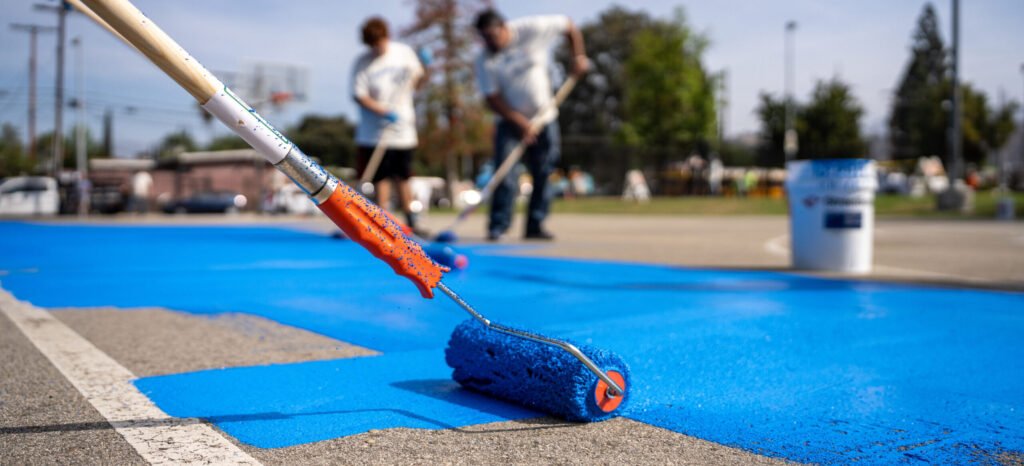
Credit: GAF
Advancements in technology continually shape the parking lot levelling industry, introducing more efficient, accurate, and cost-effective solutions. Staying abreast of these innovations can offer superior results for your parking lot levelling project.
Modern Equipment and Techniques
New tools and machinery have made the levelling process quicker and more precise. Innovations such as GPS and laser-guided levelling systems, as well as advancements in materials like polymer-modified asphalts, contribute to more durable and longer-lasting repair work.
The Future of Parking Lot Levelling
The future envisages a shift towards more sustainable and environmentally friendly parking lot construction and maintenance. The industry is already seeing the increased use of recycled materials and eco-conscious methods, reducing the environmental impact of levelling works.
Fun Fact: Did you know that new “cool” pavements are being developed? They’re designed to reflect more sunlight and absorb less heat, reducing the urban heat island effect and possibly even decreasing the need for lot levelling caused by heat expansion.
Legal and Regulatory Considerations
When undertaking a parking lot levelling project, it’s imperative to be aware of the legal and regulatory standards that govern such constructions. Adherence to these regulations ensures safety, accessibility, and compliance, which could save property owners from potential legal complications.
Complying with Local Codes
Every municipality has its own set of codes and regulations regarding the construction and maintenance of parking lots. These can include specifications on materials, drainage systems, and pavement thickness. It’s crucial to understand and comply with these local codes before beginning any levelling project. Consult with local authorities or a professional engineer to ensure your project is up to code.
ADA Compliance for Accessible Parking
In addition to local building codes, parking lots must also adhere to standards set for accessibility, such as those outlined by the Americans with Disabilities Act (ADA) in the United States. While Canadian standards may differ, such as the Accessible Canada Act, they similarly mandate that parking lots provide safe and accessible parking spaces for people with disabilities. It is essential to incorporate these considerations into your parking lot design to ensure it meets all necessary accessibility standards.
By carefully navigating the considerations outlined in this guide, you will not only achieve a well-levelled parking lot but also ensure that it remains a durable, compliant, and functional asset to your property.
Sustainable Practices in Parking Lot Levelling
Developing a sustainable approach to parking lot levelling is becoming increasingly important as environmental considerations take center stage in construction and maintenance practices. Innovations in materials and techniques not only serve the planet but can also yield long-term economic benefits.
Eco-Friendly Materials and Methods
Utilizing recycled materials such as crushed concrete for subbase construction or incorporating permeable paving solutions can significantly reduce the environmental footprint of a parking lot. These materials allow for better drainage and reduce runoff, which is crucial for minimizing erosion and pollution.
How Level-Lot Practices Contribute to Sustainability
A level surface ensures optimal drainage, preventing water accumulation that can lead to a breakdown of the pavement material. This minimizes the need for frequent repairs and the associated consumption of raw materials, aligning with sustainable management practices of built environments.
Key Takeaway: Embracing sustainable practices in parking lot levelling not only protects the environment but can also enhance the appeal of your property, meeting the growing demand for green construction.
Frequently Asked Questions (FAQs)
How often should my parking lot be re-levelled?
The need to re-level a parking lot depends on several factors, including the quality of the original work, the level of traffic, and environmental conditions. Generally, a parking lot should be inspected annually, with levelling performed as necessary based on these inspections.
Can parking lot levelling fix potholes and cracks?
Yes, parking lot levelling can address potholes and cracks. Techniques such as asphalt resurfacing or patching are used to fill and smooth these imperfections, restoring the parking lot to a safe and visually pleasing state.
What is the expected downtime for parking lot levelling?
Downtime can vary depending on the size of the parking lot and the chosen method of levelling. Minor repair work might only require a few hours, while a complete overhaul could take several days. Planning the levelling during low-traffic periods can help minimize disruption.
Are there any methods to prevent the parking lot from becoming uneven again?
While natural wear and environmental factors will always play a role, regular maintenance, proper drainage, and using high-quality materials can help prevent a parking lot from becoming uneven. Addressing minor issues promptly can also forestall more significant problems.
Is parking lot levelling covered by insurance?
It’s possible that parking lot repairs might be covered under a property insurance policy, particularly if the damage is due to a covered event. However, general wear and tear are usually not covered. It’s best to review your specific insurance policy or speak with an agent for clarification.
Conclusion
Efficient parking lot levelling is an integral part of maintaining your property’s safety, aesthetics, and value. This guide has walked you through the various aspects of levelling, including methodologies, cost considerations, maintenance, and sustainable practices. Remember, the success of a parking lot levelling project lies in choosing the right method, staying vigilant with maintenance, and adhering to legal standards and best practices. Armed with this knowledge and the resources listed, you’re well on your way to ensuring your parking lot stands as a testament to durability and conscientious property management.
Get Your Parking Lot Levelled by City Wide: Metro Vancouver’s Premier Maintenance Experts
Is your parking lot showing signs of wear and unevenness? Don’t let a bumpy entrance detract from the professionalism of your business. City Wide is here to provide top-tier parking lot levelling services across Metro Vancouver. Our skilled team uses the latest techniques and sustainable materials to ensure your parking space looks exceptional and complies with all safety regulations.
Take the first step towards a flawless parking experience:
- Comprehensive Evaluation: Contact us for a detailed assessment of your parking lot’s current condition.
- Customized Solutions: Receive a tailored plan that fits your budget and addresses your parking lot’s specific needs.
- Quality and Expertise: Trust in our over 30 years of experience to deliver high-quality results that stand the test of time.
- Minimal Disruption: We work efficiently to ensure your business operations can continue with as little downtime as possible.
Whether it’s repair, levelling, or complete resurfacing, City Wide has the expertise to get the job done right. Our commitment to excellence and customer satisfaction makes us the go-to parking lot maintenance provider in Metro Vancouver.
Ready to transform your parking area? Reach out to City Wide today here, and let’s pave the way to a smoother tomorrow.



